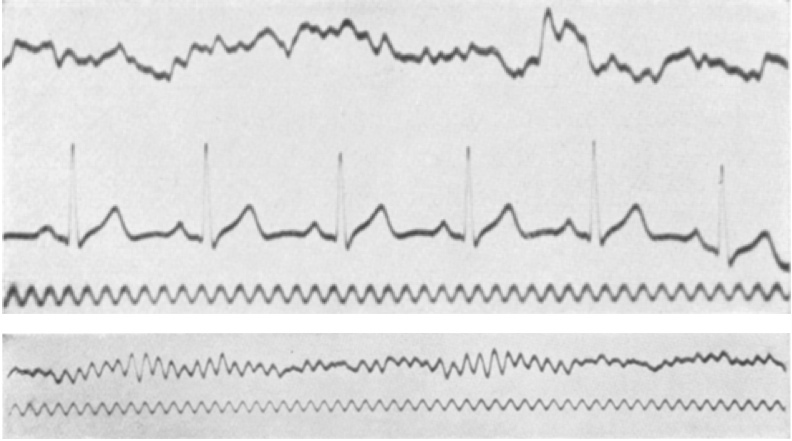




Hans Berger (1873–1941) was a German psychiatrist. He is best known as the inventor of electroenceph...
Hans Berger
Hans Berger recorded the first human electroencephalograms (EEGs) in 1924. He obtained his medical degree from the University of Jena, Germany, in 1897 and then joined the university psychiatric clinic directed by Otto Binswanger. There he remained until retirement in 1938. Berger succeeded Binswanger as director of the clinic and became Professor of Neurology and Psychiatry at the University of Jena in 1919. In his early work Berger had hoped to discover the physiological basis of psychic phenomena. The results were disappointing and Berger turned to investigating electrical activity of the brain. He characterised the wave patterns including α and β waves and coined the term “electroencephalogram”. Berger’s paper Über das Elektrenkephalogramm des Menschen (On the EEG in humans), published in 1929 in the Archive für Psychiatre und Nervenkrankheiten, was the first of 23 publications on the subject.
History of EEG
Two key discoveries led up to the construction of the first electroencephalogram. The first being electrical impulses actually being observed for the first time in July 1875 by Richard Caton through the galvanometer, which is a type of electrical ammeter to measure electric current. The second was Ernst von Fleischl-Marxow and his studies on evoked potentials, linking nervous system activity to muscle movements. Hans Berger used these two discoveries as the foundation of what he would soon discover, the electroencephalogram. Using silver foil electrodes, capillary electrometer and galvanometer, Berger was able to capture what was the first recorded Alpha (bottom picture) and Beta (top picture) brain waves.
Continue reading:

This is the first recording of brain waves, Beta on the top and Alpha on the bottom. One of the subj...

Inspired by the homonymous book by Fernando Vidal and Francisco Ortega, this timespace presents the authors' genealogy of the cerebral subject and the influence of the neurological discourse in human sciences, mental health and culture.